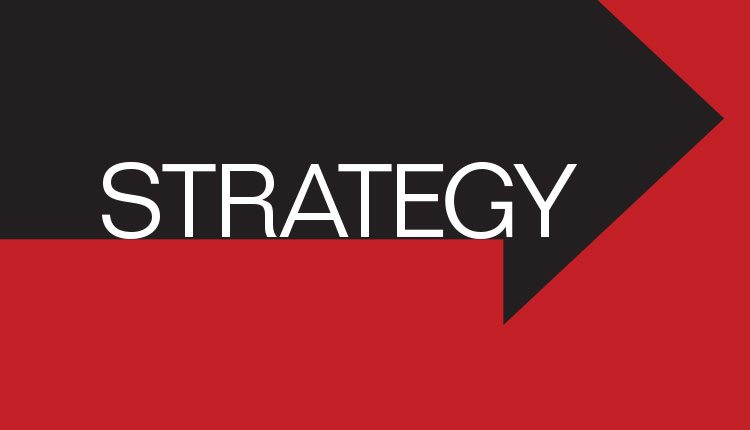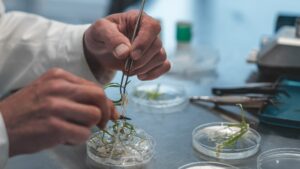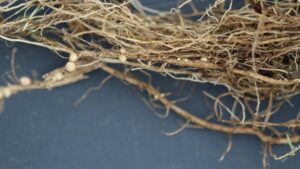While wheat and other cereals might not drive farm profits like corn and soybeans, there are products that can help to drive up yields, which is especially important in today’s farm economy when every bushel counts.
A major source of income for U.S. farmers, wheat ranks third among field crops in both planted acreage and gross farm receipts, according to the U.S. Department of Agriculture’s Economic Research Service. This year, farmers have planted more than 54 million acres of wheat — be it hard red winter, hard red spring, soft red winter, white or durum.
It’s not only an important crop in the United States, but a staple around the world. No other crop has as much land dedicated to it. Wheat yields have continuously increased in the past decades, and in some production areas one acre of land supplies enough flour to make 3,744 loaves of bread. Even so, the rate of yield increase isn’t enough to keep up with demand. As a result, wheat is frequently in short supply on the global market.
One of the biggest challenges wheat farmers are faced with is how to best cope with the ever-increasing array of diseases, fungi and insects, and each year brings about new challenges or different challenges.
Stephen Wegulo, a University of Nebraska plant pathologist, says wheat seed treatments are especially important in 2015.
This year, he said it was especially important to use fungicide-treated seed because there was a widespread epidemic of Fusarium head blight.
Photo: USDA-ARS.
“The scab fungus infects and stays in the grain, resulting in shriveled, chalky white or pinkish kernels known as Fusarium-damaged kernels, scabby kernels or ‘tombstones,’” Wegulo explains. “Kernels infected in later stages of development contain the fungus but look normal. If Fusarium-infected grain is not treated with a fungicide and is used as seed for the next crop, stand establishment can be significantly reduced.”
Other diseases that wheat falls susceptible to include common bunt, loose smut, flag smut, black point and ergot. Wegulo says these diseases can cause varying levels of yield loss and occasionally total loss.
These diseases not only result in lower yields, but they lower grain quality and value.
Another disease is Rhizoctonia root rot, which is caused by Rhizoctonia solani or R. oryzae. It attacks the seed and young seedlings, which results in uneven emergence and plant population. Ultimately, it can reduce yields. It’s primarily a problem in the Pacific Northwest and in the southern Australia wheat belt, according to James Cook of Plant Health International.
Innovation and Investment
Companies continue to invest resources in improving wheat — not just on the chemical and crop protection side. A number of companies are working on hybrid wheat and biotech wheat, with the expectation of increased demand and knowledge that yields have been increasing less than 1 percent annually.
Companies and organizations announcing investments or collaborations in recent years have included Arcadia, BASF, Bayer CropScience, Dow AgroSciences, Limagrain, KWS Lochow, Monsanto, Syngenta and Vilmorin.
Another area of expanding research is in seed treatments, which can help to protect the seed and seedling and help get the crop off to a good start. Fungicide seed treatments help to reduce losses caused by seed transmitted and soilborne fungal diseases of wheat. Some seed treatment products contain a fungicide and an insecticide and offer additional protection against fall season insects such as aphids.
“Research has shown that the use of certified seed combined with fungicide seed treatments is highly effective in preventing the spread of disease,” says Jeff Vogel, manager for the Kansas Department of Agriculture’s Plant Protection and Weed Control program.
One of many potential solutions in this area is Syngenta’s Vibrance seed treatment fungicide, which is formulated to boost a crop’s ability to root by delivering disease protection. The active ingredient is sedaxane — systemic in the plant and mobile in the soil — and provides a resistance management tool as it adds another seed treatment mode of action from the SDHI (Succinate Dehydrogenase Inhibitor) class of fungicides.
“We’ve been testing Vibrance since 2008 and have replicated trials on wheat, barley and legumes,” says Dave Barta of Crop Production Services in Spokane, Wash. “Vibrance performed well and provided solid yield responses [most of the time], which I think is really important. We’ve tested it on winter wheat in about 25 locations, and we noticed an average increase of about three bushels per acre above CruiserMaxx Cereals alone, but in addition to the product.”
Additionally, Syngenta offers CruiserMaxx Vibrance Cereals, a seed treatment that combines four chemistries to again increase root growth and safeguard seeds, seedlings and roots from a broad range of seedborne and soilborne diseases, as well as insects.
It features sedaxane in addition to mefenoxam, difenoconaole and thiamethoxam, which the company reports provides best-in-class Rhizoctonia activity.
In spring wheat trials in Minnesota and North Dakota, CruiserMaxx Vibrance Cereals provided more than a 10-bushel-per-acre yield increase in fusarium protection versus untreated seed.
Another breakthrough technology for wheat growers is Xemium, a product developed by BASF. It’s effective against Rhizoctonia and other pathogens and belongs to the class of carboxamides. Xemium works by inhibiting respiration in the mitochondria of the fungi.
BASF discovered carboxamides in 1974, and has continued researching the chemistry long after its discovery.
The active ingredient in Xemium is a SDHI. Xemium has been available as a foliar application for wheat since 2012, but the newest innovation is Xemium as a seed treatment. It not only protects the treated seed, but it continues to protect young plants as they emerge and grow.
As a seed treatment, the formulation is different. Its new water-based seed coating allows for easy handling and flexible mixing. The active ingredient has a unique mobility, leading to better distribution in the root.
From the roots, Xemium travels with the water flow to the above ground plant into the leaf tips. BASF has verified that Xemium can also increase the root mass, and the improved health of the roots will positively influence the physiology of continued root growth. This allows the plants to become stronger and less sensitive to stressors such as heat, cold or disease.
Xemium also protects against bunt, leaf stripe, loose smut, pink snow mould, seedling blight and sharp eyespot. Additionally, it’s shown to be effective in the early reduction of Septoria leaf blotch, powdery mildew, yellow rust, net blotch and scald.
In the area of overall plant health, one of the newest announcements was made by Verdesian Life Sciences, which launched Take Off ST this year. “It’s a technology we’ve had for a couple years, but we’ve adapted that to a seed treatment and gotten the rates down low,” explains Jim Pullens, Verdesian Life Sciences marketing manager for seed treatments and inoculants.
Pullens shares that this was the first year when growers used it in the field on their winter wheat last year. “We’ve gotten calls in from growers who’ve said the fields they’ve had it on are their best fields,” he says. “We think this is a way that growers can really boost their yields with a material that’s easy to use and relatively low cost, especially for a low-profit crop like winter wheat.”
Verdesian reports that Take Off ST provides quicker germination, emergence and growth, helping the plant to achieve greater photosynthetic capacity and better preservation of soil moisture. It also improves nutrient uptake, facilitates carbon fixation and increases nitrogen utilization.
Take Off was discovered by Los Alamos National Laboratory in New Mexico and developed by Verdesian. There are now six formulations with Take Off ST, the seed treatment formulation, being one of them.
“Take Off works inside the plant to accelerate nutrient acquisition and assimilation while improving nitrogen efficiency,” says Ryan Bond, Verdesian vice president of marketing and technical development.
At this year’s Farm Progress Show in Decatur, Ill., Verdesian launched a new product, called Tuxedo Cereals, that’s focused on micronutrients. It uses the patented palmer technology that was used with Avail and Nutrisphere in the past, to protect micronutrients from binding in the soil, Pullens explains.
“Micronutrients are very important for us to get yields,” he says, noting that they can be a limiting factor for growers looking to achieve high yields. “But they are high cost and they require the grower to broadcast a lot of material.”
In cereals, zinc is a big factor — nearly 50 percent of the cultivated soils for wheat production globally are low in plant available zinc.
Pullens says with Tuxedo they can apply as much zinc in a seed treatment to get the results they would get from about 50 pounds of broadcast fertilizer, distributed evenly.
“We think it’s a more efficient way to get those nutrients to that crop to get the yield response growers want to receive,” he says.
Tuxedo has been tested in more than 50 wheat trials across U.S. wheat growing regions. Data from these trials shows a 4:1 return on investment.
“It’s the farmer’s insurance that the seed he has purchased, he’s also going to get good yield from.”
— Palle Pedersen
Investments Now for a Better Future
According to BASF, research and development efforts are essential for the development of new seed and chemical innovations to feed, clothe and provide fuel for a growing world population, which is why BASF invests more than $2 million daily into agricultural research and development.
“BASF is continually seeking new ways to help farmers become more efficient and get the most out of every acre,” says Paul Rea, BASF senior vice president for North America. “We’re driven to deliver innovation to help farmers deal with the challenges they face today and prepare them for those that still lie ahead.”
Syngenta’s Palle Pedersen, head of product marketing for its Seedcare business says these coatings really help to defend the seed so it can germinate and reach its genetic potential. “It’s the farmer’s insurance that the seed he has purchased, he’s also going to get good yield from,” he adds.
Syngenta continues its investment in this market — estimated to be valued at $600 million annually in North America — with the expansion of its Stanton, Minn., Seedcare Institute. A $20 million investment, the expanded facility will have an additional 38,000 square feet of high-tech laboratories for research and development, plus a state-of-the-art training facility.
The overall goal of seed treatments is to integrate the insecticides, fungicides, nematicides, biologicals and micronutrients so that all can be put on the seed. Each year, the seed treatment industry makes progress as more discoveries are made and new products are released.


